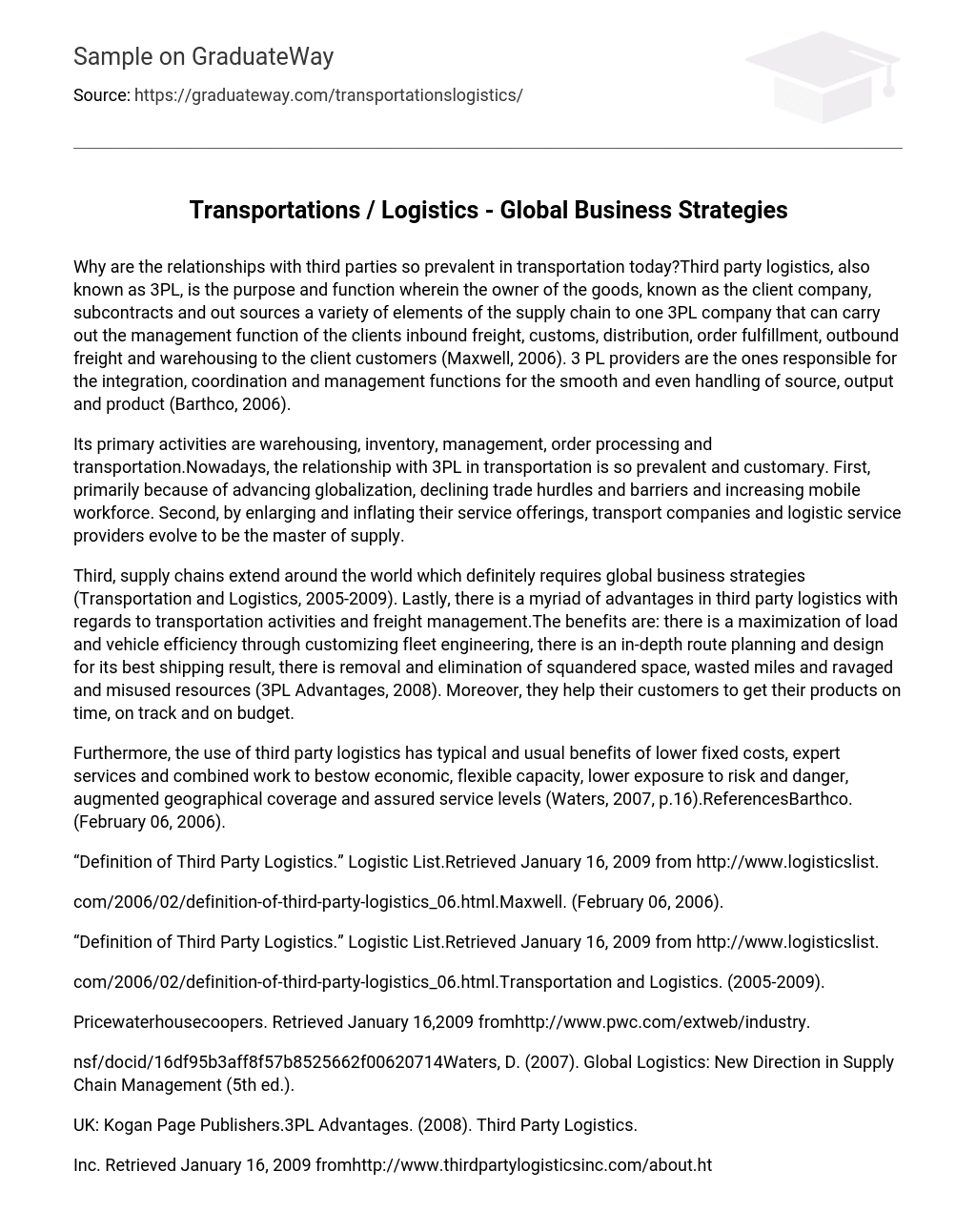Why are the relationships with third parties so prevalent in transportation today?Third party logistics, also known as 3PL, is the purpose and function wherein the owner of the goods, known as the client company, subcontracts and out sources a variety of elements of the supply chain to one 3PL company that can carry out the management function of the clients inbound freight, customs, distribution, order fulfillment, outbound freight and warehousing to the client customers (Maxwell, 2006). 3 PL providers are the ones responsible for the integration, coordination and management functions for the smooth and even handling of source, output and product (Barthco, 2006).
Its primary activities are warehousing, inventory, management, order processing and transportation.Nowadays, the relationship with 3PL in transportation is so prevalent and customary. First, primarily because of advancing globalization, declining trade hurdles and barriers and increasing mobile workforce. Second, by enlarging and inflating their service offerings, transport companies and logistic service providers evolve to be the master of supply.
Third, supply chains extend around the world which definitely requires global business strategies (Transportation and Logistics, 2005-2009). Lastly, there is a myriad of advantages in third party logistics with regards to transportation activities and freight management.The benefits are: there is a maximization of load and vehicle efficiency through customizing fleet engineering, there is an in-depth route planning and design for its best shipping result, there is removal and elimination of squandered space, wasted miles and ravaged and misused resources (3PL Advantages, 2008). Moreover, they help their customers to get their products on time, on track and on budget.
Furthermore, the use of third party logistics has typical and usual benefits of lower fixed costs, expert services and combined work to bestow economic, flexible capacity, lower exposure to risk and danger, augmented geographical coverage and assured service levels (Waters, 2007, p.16).ReferencesBarthco. (February 06, 2006).
“Definition of Third Party Logistics.” Logistic List.Retrieved January 16, 2009 from http://www.logisticslist.
com/2006/02/definition-of-third-party-logistics_06.html.Maxwell. (February 06, 2006).
“Definition of Third Party Logistics.” Logistic List.Retrieved January 16, 2009 from http://www.logisticslist.
com/2006/02/definition-of-third-party-logistics_06.html.Transportation and Logistics. (2005-2009).
Pricewaterhousecoopers. Retrieved January 16,2009 fromhttp://www.pwc.com/extweb/industry.
nsf/docid/16df95b3aff8f57b8525662f00620714Waters, D. (2007). Global Logistics: New Direction in Supply Chain Management (5th ed.).
UK: Kogan Page Publishers.3PL Advantages. (2008). Third Party Logistics.
Inc. Retrieved January 16, 2009 fromhttp://www.thirdpartylogisticsinc.com/about.html





